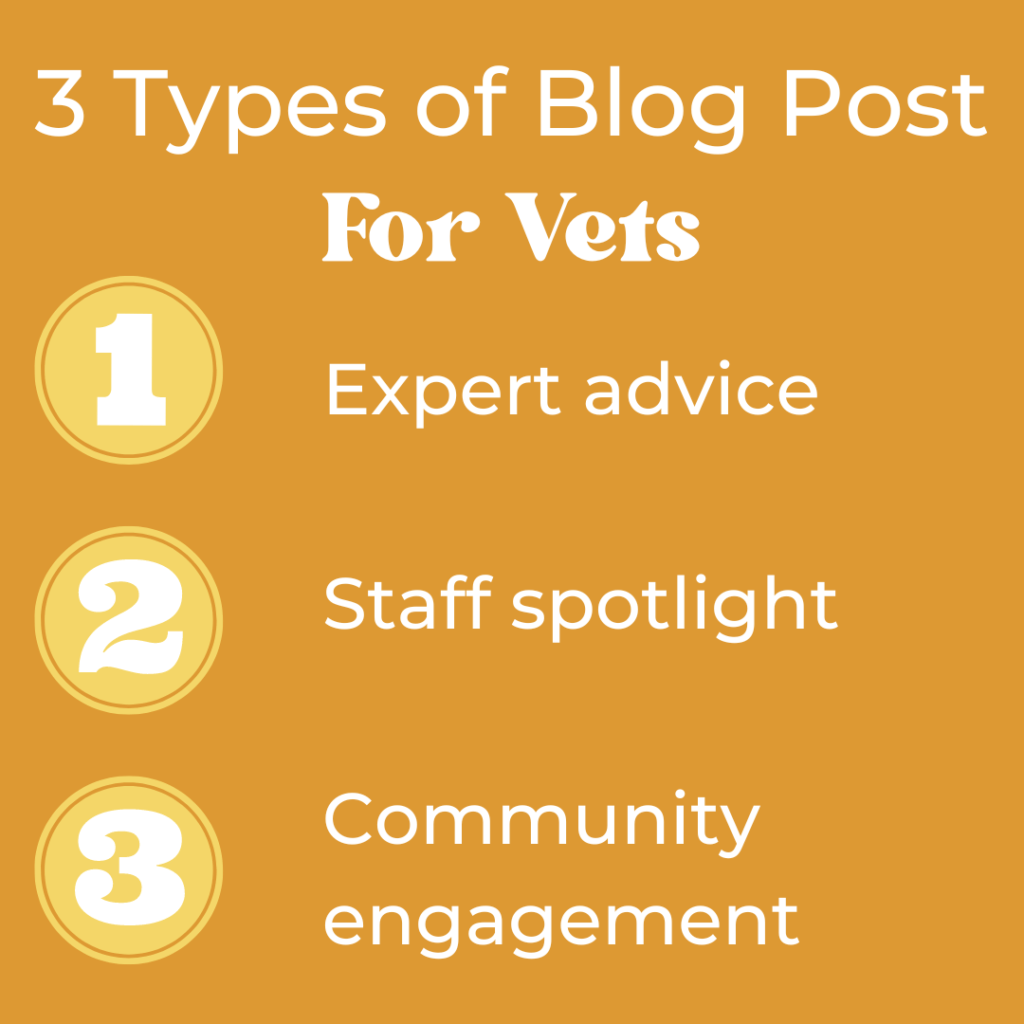
As a pet owner myself, I know how important it is for vets to create the right image for themselves. There's a lot of love and hate for vets, mostly consisting of love for what they do and hate for how much they cost. It's tricky to engage with your patients' owners in the right way, especially when they need to trust you. But at least you're not lawyers or estate agents.
The good news is that veterinary surgeries or clinics are basically perfect for engaging your customers through blog content, and showing them how much you care. There's so much information you can share, and you have the bonus of plenty of cute animal content too. Your customers look to you for expert help and guidance about how to care for their pets at home, as well as when to make an appointment. Your blog is ideal for giving them the advice they need. There's a lot of scope for sharing fun stuff too, both on your blog as well as across social media and your emails. Who doesn't want to see that litter of puppies you just had in?
You should be able to come up with a huge range of ideas for blog posts. But if you're not sure where to begin, here are three categories your posts could fall into.
-
Expert Advice
It doesn't take a genius to realise that sharing expert advice makes sense for vets. Your customers trust you to know about animal health, and your blog can be a great resource for them.
Frequently asked questions might be a good place to start if you want to cover some popular topics. Think about what your customers want to know about the treatments you offer and how to care for their pets. What happens when someone wants to have their cat spayed? How do they put their dog on a diet? How often should pets have vaccinations? These sorts of questions are sure to come up a lot, and your blog can provide in-depth answers. One thing to keep in mind is that other veterinary blogs will be answering the same questions, though. So it's important to think about how you can offer more value, maybe with more thorough answers or more up-to-date information.
Tailoring your blog content to your surgery obviously makes sense. Whether you're a general veterinary clinic or you offer services for exotic pets, large animals, or exclusively for cats, make sure you're posting content that fits your clients.
-
Staff Spotlight
Highlighting your staff is another way to emphasise your expertise, while also humanising your team and making them relatable. There are a few ways you could do this so people can get to know everyone. Try starting with some staff bios to introduce everyone, their qualifications and experience, and what they're passionate about. You might already have a staff page on your site, but it's something you can expand on with a blog post for each staff member.
Another idea is to have your staff take it in turns writing their own blog posts, or at least putting their name to them. If you don't want to give them the extra work of actually writing a post, they could suggest a topic to explore and maybe create a rough outline. You can then get help with writing the post and have your team member approve it before it's published. These posts could cover different topics your employees are interested in, or they could be something like a "day in the life" post.
-
Community Engagement
Vets can become an important part of the local community. You take care of everyone's pets, and pets are seen as family. So making an effort to really engage with that is helpful if you want to show your customers how valuable you are. Getting involved with the community is a good promotion tactic too, and can be excellent for raising brand awareness. In terms of SEO, it can be quite useful for local SEO, which is obviously important for veterinary practices providing their services from physical locations.
So how do you engage with your community using your blog? You can start by showing off the ways you're getting involved offline. Maybe you're sponsoring an event or running a microchipping drive, or you work with an animal rescue. These are perfect things to highlight on your blog and share on social media. Tell people a bit about what you're getting up to and why. You can reinforce your brand values and the issues that matter to you, as well as how that benefits your customers. If you sponsor, attend or host an event, you can write a post beforehand about what's going to take place, then another after giving a rundown of everything.
Highlighting your patients can be a fun way to engage with the community too. Obviously, you're not going to post about every vaccination or tummy bug that comes through your doors, but there could be some interesting or just especially adorable animals you want to talk about. If you've got a litter of puppies in, an unusual pet has come for a checkup, or maybe you want to use a patient as an example of good pet care or to give a warning about certain health concerns, these could all make good blog posts. Vets who get out into the community to treat farm animals, visit rescues or even zoos, or make home visits, can share their adventures too.
So to recap:
- Share your expert veterinary knowledge
- Highlight your staff and let them have their say
- Show how you connect with the community as an important member
I'm here to help if you're looking for help with your veterinary blog content. I'm just an email away!
